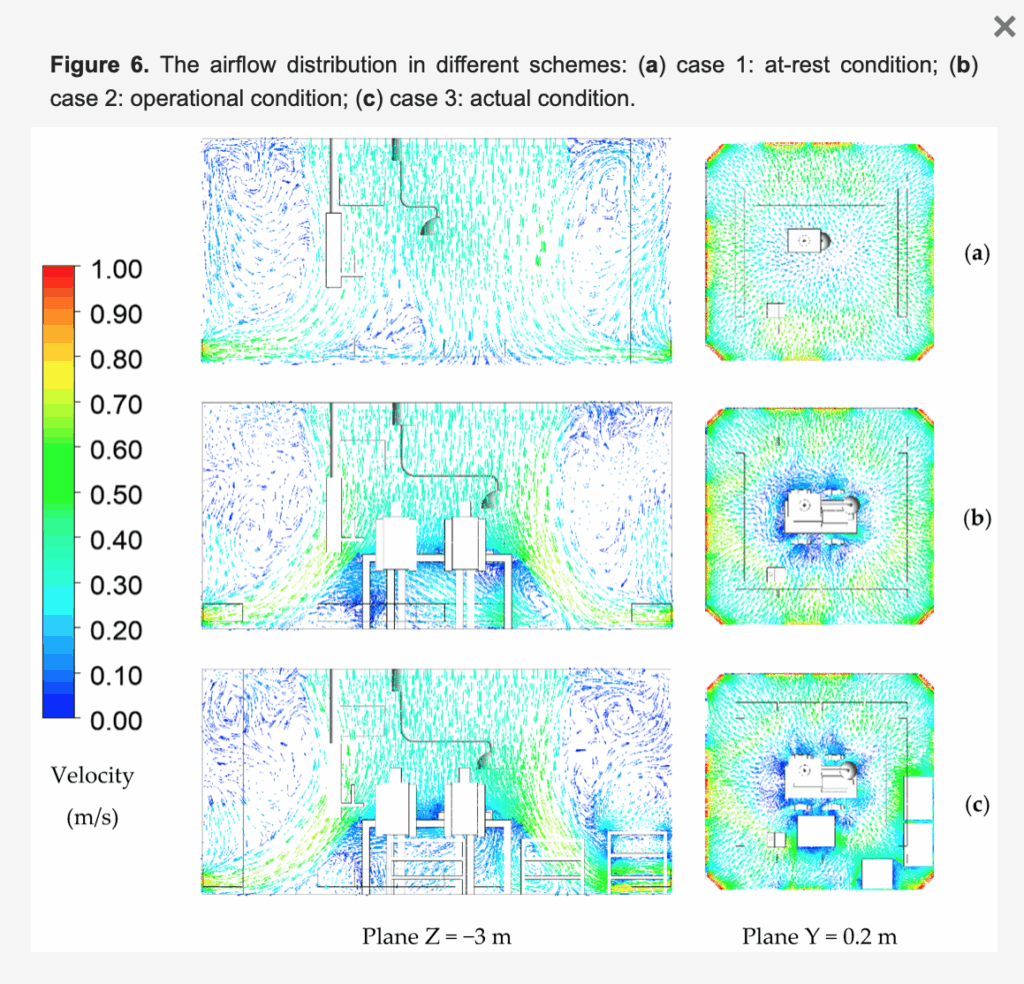I chose Figure 6 from Investigation of Airflow Distribution and Contamination Control with Different Schemes in an Operating Room by Fujen Wang, Indra Permana, Dibakar Rakshit, and Bowo Yuli Prasetyo. The figure, produced by the authors, was created as part of their study, which aimed to analyze how airflow patterns in an operating room affect contamination control under different conditions. What I appreciate about this visualization is how it integrates satisfying visuals with science. The computational fluid dynamics (CFD) simulation clearly illustrates airflow distribution in three scenarios: an empty room, one with personnel, and one with both personnel and equipment. This makes it easy to see how obstacles influence turbulence and contamination risks. Artistically, the color gradients and flow lines create an image that turns the invisible dynamics of air movement into something visually engaging. It is an example of how scientific visualization can turn complex processes into images that are both informative and aesthetically pleasing.
Best of Web: Contamination Control
Categories
Flow Vis Guidebook
- Introduction to the Guidebook
- Overview 1: Phenomena. Why Does It Look Like That?
- Overview 2: Visualization Techniques
- Overview 3: Lighting
- Overview 4 - Photography A: Composition and Studio Workflow
- Overview 4 - Photography B: Cameras
- Overview 4 - Photography C: Lenses - Focal Length
- Overview 4 - Photography C: Lenses - Aperture and DOF
- Overview 4: Photography D: Exposure
- Overview 4 - Photography E - Resolution
- Overview 5 - Post-Processing
- Clouds 1: Names
- Clouds 2: Why Are There Clouds? Lift Mechanism 1: Instability
- Clouds 3: Skew - T and Instability
- Clouds 4: Clouds in Unstable Atmosphere
- Clouds 5: Lift Mechanism 2 - Orographics
- Clouds 6: Lift Mechanism 3 - Weather Systems
- Boundary Techniques - Introduction
- Dye Techniques 1 - Do Not Disturb
- Dye Techniques 2 - High Visibility
- Dye Techniques 3 - Light Emitting Fluids
- Refractive Index Techniques 1: Liquid Surfaces
- Refractive Index Techniques 2: Shadowgraphy and Schlieren
- Particles 1- Physics: Flow and Light
- Particles 2: Aerosols
- Particles 3: In Water
- Particles 4 -Dilute Particle Techniques
- Art and Science
- TOC and Zotpress test
- Photons, Wavelength and Color

